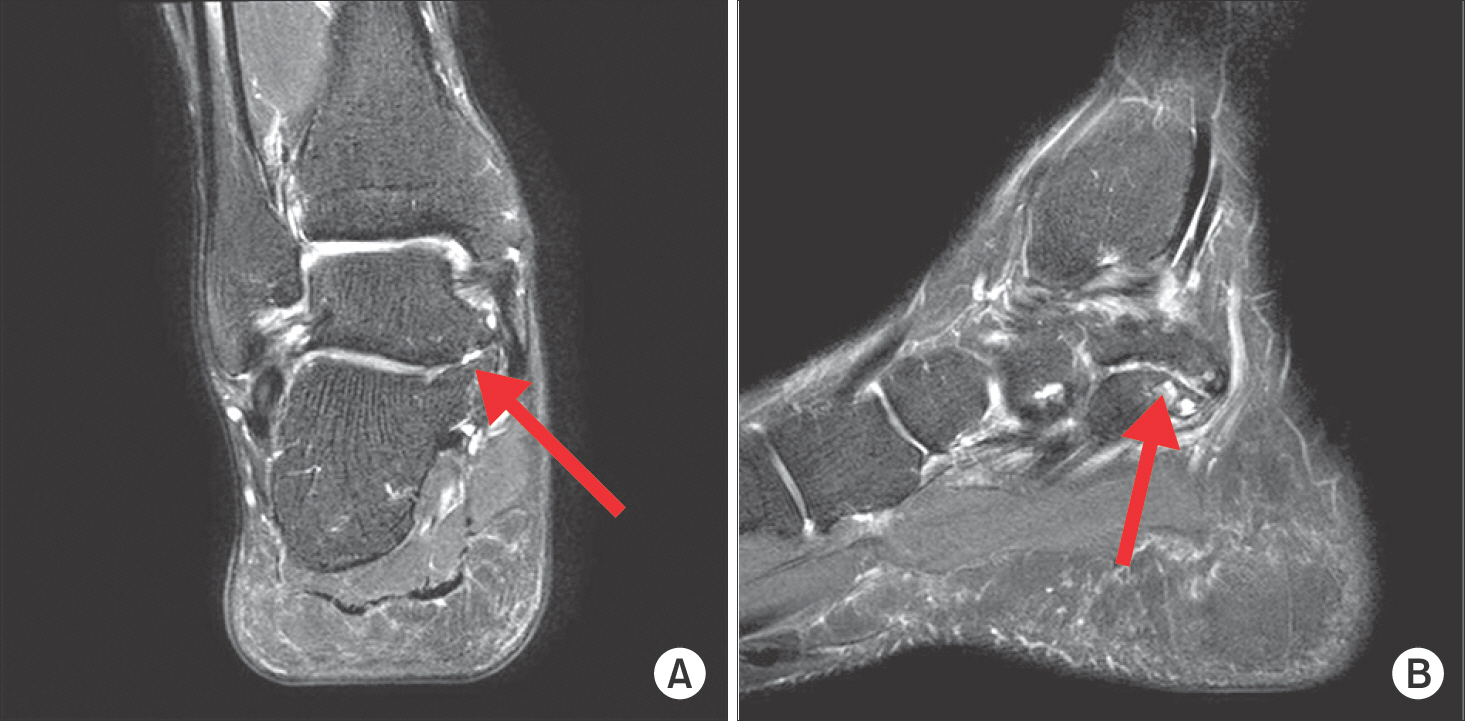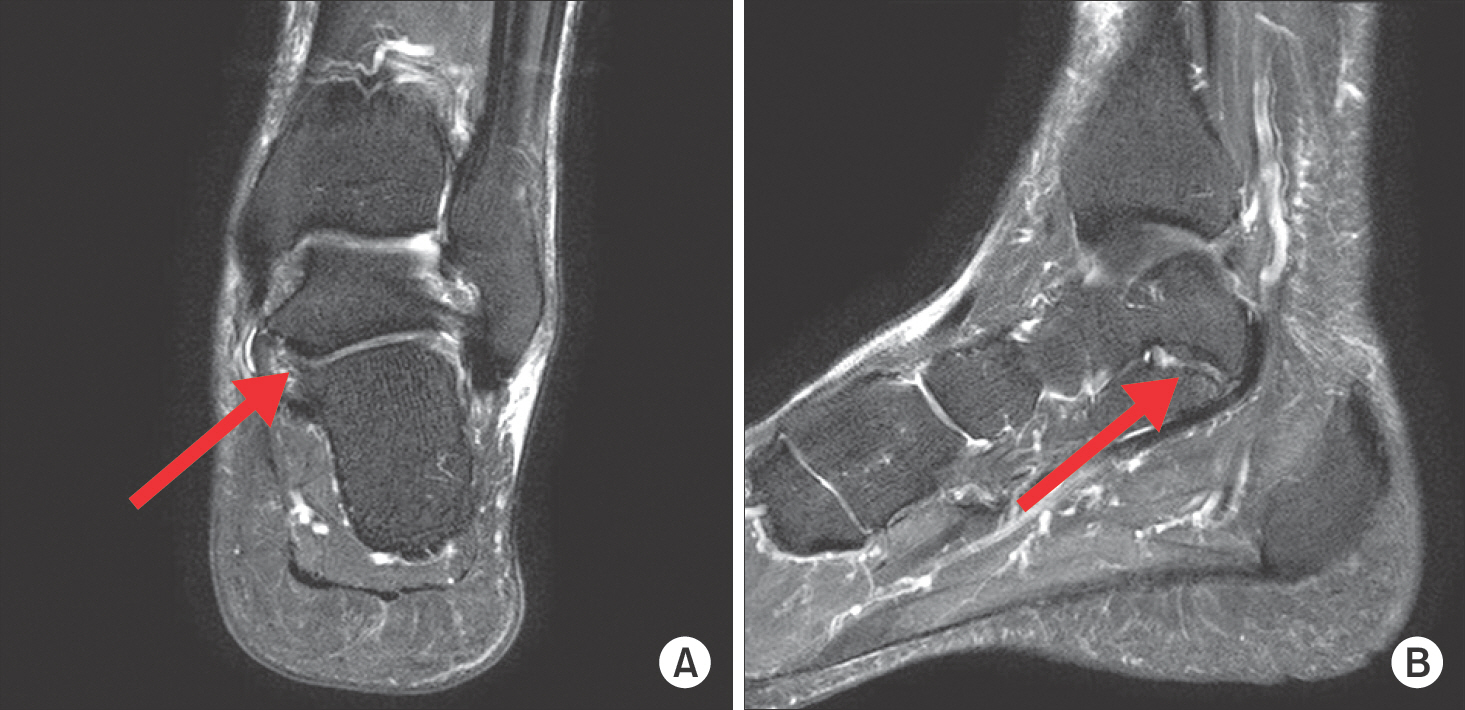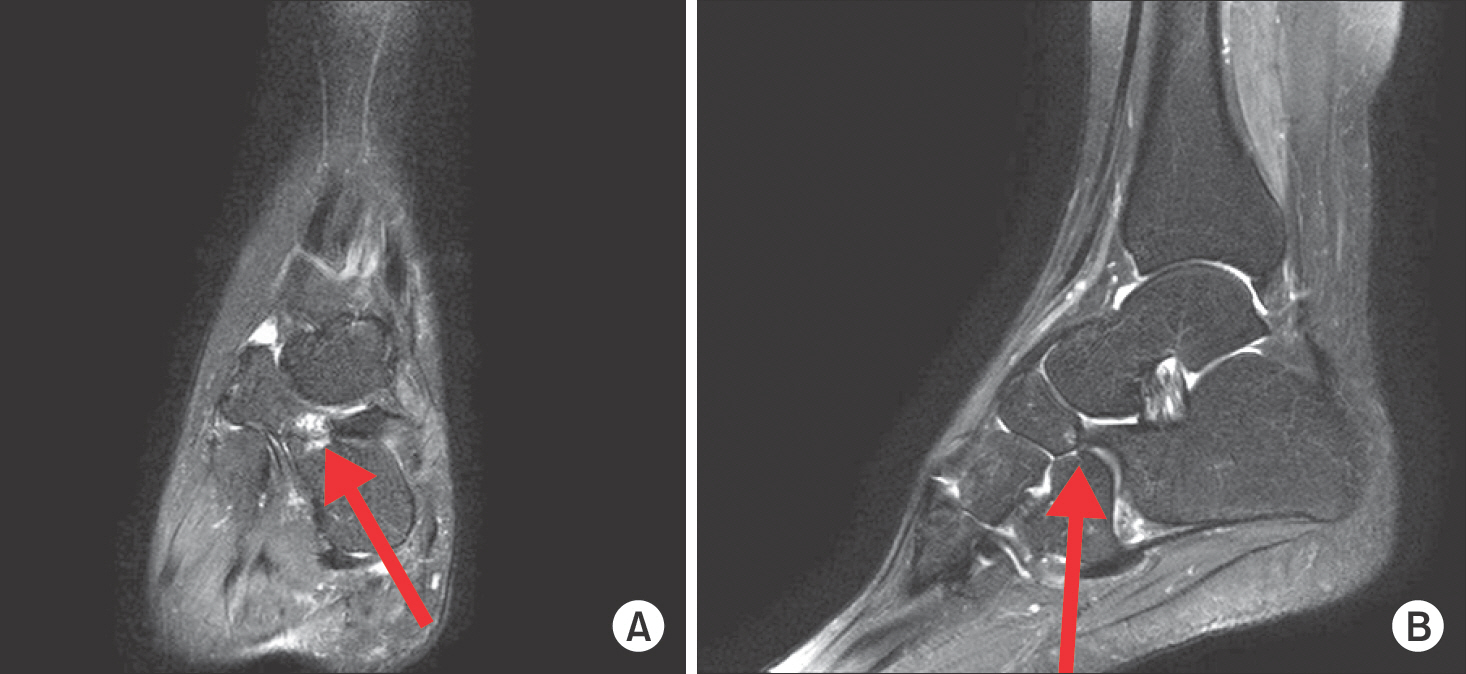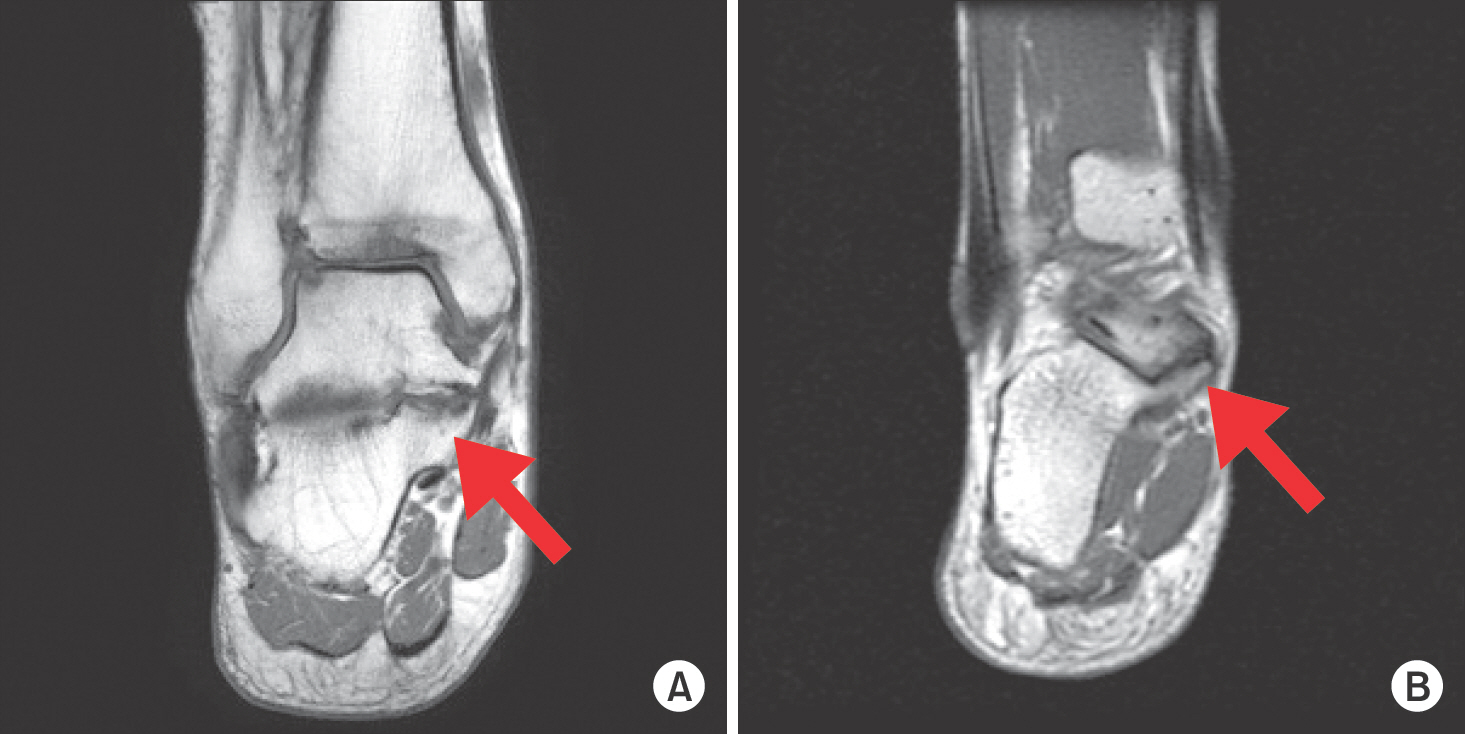J Korean Foot Ankle Soc.
2016 Sep;20(3):116-120. 10.14193/jkfas.2016.20.3.116.
Incidence of Tarsal Coalition: An Institutional Magnetic Resonance Imaging Analysis
- Affiliations
-
- 1Department of Orthopedic Surgery, Inje University Busan Paik Hospital, Busan, Korea. ortho1@hanmail.net
- 2Department of Radiology, Inje University Busan Paik Hospital, Busan, Korea.
- 3Department of Anesthesiology and Pain Medicine, Inje University Busan Paik Hospital, Busan, Korea.
- KMID: 2351416
- DOI: http://doi.org/10.14193/jkfas.2016.20.3.116
Abstract
- PURPOSE
Tarsal coalition results from defects during the developmental stage and produes ankle pain and limitations in the range of motions. Its incidence has been reported to be 1%, but there has not been any reports with respect to Koreans. Therefore, we evaluated the prevalence of tarsal coalition in Koreans.
MATERIALS AND METHODS
Between 2005 and 2014, we analyzed a total of 733 cases of foot and ankle magnetic resonance imaging (MRI) in our hospital. There were 391 men and 342 women. All MRI readings were read by a radiologist in our hospital. We classified the coalitions in accordance with the histological and anatomical characteristics, and calculated the prevalence in each group. Moreover, we tried to determine the prevalence of tarsal coalitions in accordance with sex, age, and proportion of the symptomatic tarsal coalitions.
RESULTS
There were a total of 11 MRIs of tarsal coalition"”9 talocalcaneal coalitions, 1 calcaneocuboidal coalition, and 1 calcaneonavicular coalition. Nine tarsal coalitions were observed in men and 2 in women.
CONCLUSION
Through this study, we found that the prevalence of tarsal coalition, including the asymptomatic patients, is similar to the previously known prevalence (1%). By getting more MRIs of the foot and ankle, we could better represent the prevalence of tarsal coalitions in Koreans.
Keyword
Figure
Reference
-
1.Harris BJ. Anomalous structure in the developing human foot. Anat Rec. 1955. 121:399.2.Jack EA. Bone anomalies of the tarsus in relation to peroneal spastic flat foot. J Bone Joint Surg Br. 1954. 36:532–42.
Article3.Jayakumar S., Cowell HR. Rigid flatfoot. Clin Orthop Relat Res. 1977. 122:77–84.
Article4.Mosier KM., Asher M. Tarsal coalitions and peroneal spastic flat foot. A review. J Bone Joint Surg Am. 1984. 66:976–84.
Article5.Zaw H., Calder JD. Tarsal coalitions. Foot Ankle Clin. 2010. 15:349–64.
Article6.Nalaboff KM., Schweitzer ME. MRI of tarsal coalition: frequency, distribution, and innovative signs. Bull NYU Hosp Jt Dis. 2008. 66:14–21.7.Newman JS., Newberg AH. Congenital tarsal coalition: multimodality evaluation with emphasis on CT and MR imaging. Radio-graphics. 2000. 20:321–32.
Article8.Wechsler RJ., Schweitzer ME., Deely DM., Horn BD., Pizzutillo PD. Tarsal coalition: depiction and characterization with CT and MR imaging. Radiology. 1994. 193:447–52.
Article9.Pachuda NM., Lasday SD., Jay RM. Tarsal coalition: etiology, diagnosis, and treatment. J Foot Surg. 1990. 29:474–88.10.Harris RI., Beath T. Etiology of peroneal spastic flat foot. J Bone Joint Surg Br. 1948. 30:624–34.
Article11.Varner KE., Michelson JD. Tarsal coalition in adults1 Foot Ankle Int1. 2000. 21:669–72.12.Conway JJ., Cowell HR. Tarsal coalition: clinical significance and roentgenographic demonstration. Radiology. 1969. 92:799–811.
Article13.Munk PL., Vellet AD., Levin MF., Helms CA. Current status of magnetic resonance imaging of the ankle and the hindfoot. Can Assoc Radiol J. 1992. 43:19–30.14.Masciocchi C., D’Archivio C., Barile A., Fascetti E., Zobel BB., Gallucci M, et al. Talocalcaneal coalition: computed tomography and magnetic resonance imaging diagnosis. Eur J Radiol. 1992. 15:22–5.
Article15.Leonard MA. The inheritance of tarsal coalition and its relationship to spastic flat foot. J Bone Joint Surg Br. 1974. 56:520–6.
Article16.Stormont DM., Peterson HA. The relative incidence of tarsal co-alition. Clin Orthop Relat Res. 1983. 181:28–36.
Article17.Cowell HR., Elener V. Rigid painful flatfoot secondary to tarsal coalition. Clin Orthop Relat Res. 1983. 177:54–60.
Article18.Kulik SA Jr., Clanton TO. Tarsal coalition. Foot Ankle Int. 1996. 17:286–96.
Article19.Staser J., Karmazyn B., Lubicky J. Radiographic diagnosis of posterior facet talocalcaneal coalition. Pediatr Radiol. 2007. 37:79–81.
Article
- Full Text Links
- Actions
-
Cited
- CITED
-
- Close
- Share
- Similar articles
-
- Tarsal Coalitions
- Prevalence of Tarsal Coalition in the Korean Population: A Single Institution-Based Study
- Isolated Symptomatic Scapho-Lunate Coalition without Accompanying Anomalies
- Operative Treatment of the Tarsal Tunnel Syndrome Caused by Tarsal Coalition
- Lateral Sliding Calcaneal Osteotomy for Bilateral Talocalcaneal Coalition with Complete Bone Bridge (A Case Report)





